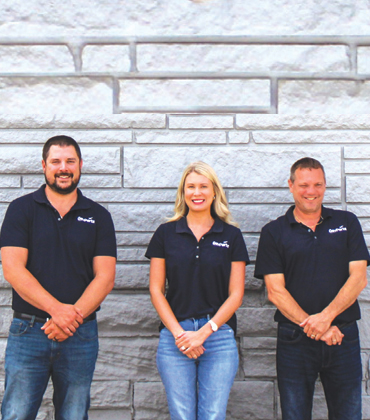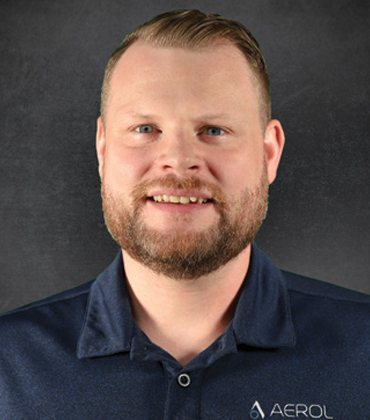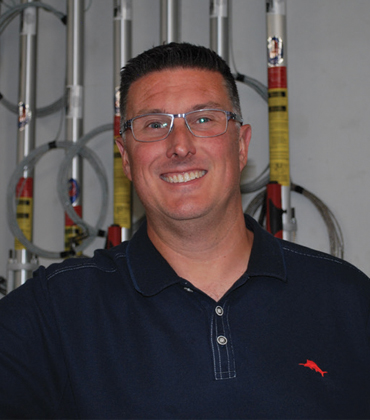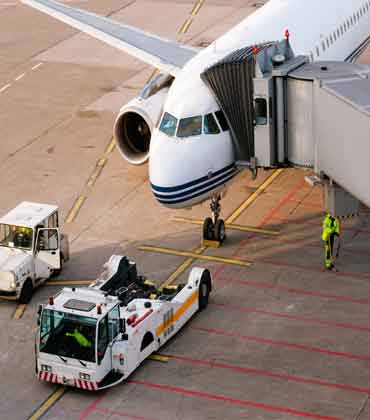THANK YOU FOR SUBSCRIBING
The Avionics Landscape: A Shift Towards Ethernet Converters for Legacy I/O Modern avionics systems are increasingly dominated by Switched Ethernet, a testament to its flexibility and performance. However, this shift presents a significant challenge: seamlessly integrating vital legacy communication standards—such as MIL-STD-1553 (1553), ARINC 429, and discrete I/O—that remain critical for operations like radio, flight controls and stores management. A flexible and cost-effective approach has taken hold: directly connecting these legacy I/O sources to the Ethernet network via small, portable data converters or collectors. This “appliance” or “brick” approach effectively transforms the Ethernet network into a pseudo-backplane, utilizing small, rugged bridge devices or in-line cable assemblies. The benefits include near-limitless software portability, simplified hardware configurations, reduced power consumption, and simplified wiring. Alta Data Technologies: Pioneering Networked I/O Solutions At the forefront of this evolution is Alta Data Technologies (Alta). Recognizing the transformative potential of networked I/O over 10 years ago, Alta pioneered the concept of real-time 1553 & ARINC converters with their groundbreaking ENET1553™ product. The ENET is a real-time avionics Ethernet converter that seamlessly bridges legacy 1553 systems in a rugged package about the size of a candy bar. Alta’s design ingeniously utilizes a thin-server, real-time IP/UDP protocol engine as its “backplane,” which allows memory at speeds approaching traditional PCIe backplanes. The thin-server methodology is a game-changer, significantly shortening round-trip transmission times by optimizing IP/ UDP stack processing. ’’Introducing the NLINE™ Series: The Pinnacle of Rugged Reliability Building on years of experience and market feedback, Alta engineers developed the NLINE™ product line—an even more ruggedized derivative of the ENET concept. As Jake Haddock, CTO of Alta, explains, “The ENET distinguishes itself with a real-time, FPGA Ethernet IP processing engine in front of our 1553 or ARINC protocol engines. Ethernet IP packets are turned around in less than 10-20 µSec, which is usually much faster than even RTOS IP stacks can process packets at 1G—so our product is not the diminishing variable in the connections path delay.”
Top Metal Component Contract Manufacturer 2025
GovParts is where legacy blueprints meet modern engineering, delivering mission-critical components to the U.S. Department of Defense (DoD) with unmatched precision and compliance. From Made-to-Print metal parts to wire rope systems and complex assemblies, GovParts does more than manufacture; it rethinks how defense production can work better. While most suppliers simply fulfill orders, GovParts digs deeper. It identifies and resolves inefficiencies hidden in outdated materials, legacy specs, and bureaucratic bottlenecks while remaining compliant. Since its acquisition by a woman entrepreneur in 2023, the company has more than doubled its sales, driven by a solutions-focused culture that blends technical rigor with strategic foresight. Much of GovParts’ work involves bringing decade-sold designs, some dating back to the 1970s, to life with today’s precision manufacturing tools. As a trusted partner of the Defense Logistics Agency, the company is known for tackling the challenges others avoid. “We’re working with legacy materials and detailed packing requirements that push us to be more precise and innovative in our execution. While sometimes rooted in decades-old standards, these specifications present opportunities for us to uphold the highest quality while exploring more efficient ways to meet contract expectations,” says Adam Royer, general manager. Although current procurement processes often limit pre-award feedback and deviation approvals can take up to 75 days, GovParts sees this as an area for collaboration and improvement, an opportunity to enhance agility and better support the Department of Defense’s mission-critical needs. From Reactive to Revolutionary: Changing the Defense Game GovParts challenges these constraints head-on, rewriting the playbook to bring modern solutions into a legacy-bound system. The company is moving upstream in the defense supply chain, shifting from reactive fulfillment to proactive engineering. By engaging earlier in the DoD acquisition process, GovParts helps clients modernize outdated specifications, identify better materials, and streamline post-award chaos into pre-award clarity.
Top Military-Grade Ground Support Equipment Manufacturer 2025
Aerol is a trusted engineering partner with over seven decades of experience in delivering reliable mobility and ground support solutions for mission-critical applications. It designs application-specific high-performance casters, running gear and ground support equipment with end-users in mind. A deep understanding of complex operational needs allows it to support various clients, including Department of Defense (DoD) engineering depots, military prime contractors and commercial aerospace and space exploration leaders like United Launch Alliance and Blue Origin. Aerol’s strength lies in its deep vertical integration, made possible by its parent organization, Caster Concepts, comprising ten U.S.-based business units specializing in unique capabilities. This tightly connected structure enables Aerol to leverage in-house expertise to reduce lead times and develop distinct, custom-built solutions that others can’t match. “Our strength lies in being able to tailor our solutions like an à la carte menu—mixing proven components to meet precise requirements with speed and precision,” says Alex Harden, technical product manager. For instance, its sister company, Conceptual Innovations, plays a key role in integrating Aerol’s solutions with advanced technologies like automated systems and automated guided vehicles. From fabrication and machining to in-house polyurethane processing, every stage of production is handled internally, ensuring complete control and accelerated turnaround. Aerol’s ability to deliver reliable, high-performance equipment is powered by a streamlined process that begins with a strong focus on engineering and quality standards. Its in-house engineering team includes experts in mechanical, electrical and hydraulic design. As a certified AS9100D supplier, it follows rigorous processes and meets demanding military specifications.
Most Reliable Aviation Service 2025
In the high-stakes world of private aviation, it’s easy to get caught up in glossy brochures and flashy jets. But Paradise Jets, under the steady leadership of Senior Vice President Cynthia Thomas, is rewriting that script. The company’s approach isn’t about selling aircraft or flight hours—it’s about listening, planning, and becoming a trusted partner in its clients’ long-term travel strategies. From its base as a certified Part 135 charter operator to managing a fleet of diverse aircraft and offering unique co-ownership options, the company seamlessly blends strategic advising with end-to-end implementation. The result is a rare mix of sophistication and reliability that has resonated with high-profile clients across the globe. At the heart of Paradise Jets is the conviction that no two travelers are the same. Some clients are time-pressed executives juggling multi-city meetings in a single day; others seek the serenity of leisure travel without sacrificing flexibility. Paradise Jets digs deep into each client’s unique situation, posing the essential questions: How often do you fly? How many passengers typically accompany you? Is this for business, leisure, or a mix of both? The answers inform a customized strategy—whether it’s full ownership, block charter, or participation in the company’s innovative co-ownership program. “Our hands-on, analytical process is not just theoretical,” says Thomas. “Paradise Jets doesn’t stop at providing recommendations—we put them into action. If a client opts for ownership, we manage the entire acquisition process: helping select the right aircraft, overseeing pre-buy inspections, ensuring regulatory compliance, and placing the jet under our operational certificate.” For clients who prefer flexibility, the co-ownership model allows access to aircraft without the full burden of ownership—no monthly fees and a favorable buyback option included. It’s this careful balance of strategy and action that enables Paradise Jets to fulfill the unique missions of clients, every time. One of the company’s longstanding client relationships illustrates this commitment. A business traveler initially came to Paradise Jets out of frustration— frequent maintenance issues, unreliable crews, and even aborted takeoffs were making private travel more stressful than seamless. What began as a consultation quickly evolved into full-service management. Paradise Jets evaluated the client’s needs, provided more reliable aircraft, and eventually assumed full responsibility for their travel logistics. The client can now visit multiple locations in a day and return home in time to tuck their children into bed—a mission Paradise Jets proudly supports.
Top Aircraft Maintenance Hoist System 2025
Just beyond the taxiway, where commercial jets cool between flights and technicians work against the clock, precision matters more than power. A single operator, a narrow maintenance window, and a 400-pound power unit component tucked beneath the belly of a commercial jet—handling must be flawless, the component undamaged, and safety cannot be left to chance. An inch too far is an inch too costly. Usually, this job takes a crew—and time they don’t have. But not today. The PF Fishpole Hoist is already mounted and ready. One technician steadies the hoist, checks the barrel assembly, and begins the lift. No hesitation, no wasted motion. The unit slides free like it was designed to. One person. One hoist. One less delay on the runway. That is the promise of PF Fishpole Hoists. For over five decades, the company has specialized in aircraft maintenance lifting systems designed to make complex tasks safer, faster, and remarkably efficient. Each unit is engineered for single-person setup and offers the strength to handle demanding tasks, while remaining light enough for quick, solo installation. Though larger components—like Boeing’s APU systems—typically require two operators for lifting and lowering, the hoists give crews the flexibility to adapt, reduce downtime, and keep operations moving. From worm drives that prevent accidental drops to load limiters that protect both aircraft and crew, the company quietly delivers the kind of reliability that keeps flights on schedule—and out of the hangar. “Our hoists are lightweight, reliable, and designed for one-person setup and operation. That is what sets us apart. We are always refining the design to make sure it is safer, easier to use, and better for our customers,” says Nick Weder, owner. Meeting the Needs of Modern Aviation PF Fishpole Hoists’ customer base spans commercial airlines, MRO facilities, defense operations, and teams that demand reliability in high-stakes, high-pressure environments. The company’s hoists are available in both manual and pneumatic-powered versions, giving customers the flexibility to match tools with their workflow and ergonomic needs. The powered units reduce physical strain on operators, making repeated lifting tasks less difficult while maintaining precision and control. One of the company’s standout innovations is its load-limiting system, which caps lifting capacity at 550 pounds—just above the aircraft’s intended threshold. The system prevents structural damage caused by operator error, such as over-torquing or failing to remove bolts before hoisting. This makes the tool essentially fail-safe.
CXO INSIGHTS

Evolution of Aerospace Technology
Allan Bachan, Vice President, ICF

Unveiling Automated Maintenance in Aviation
Robert DeGrie, Director of Technical Services (Aircraft Engineering), Amerijet International

Artificial Intelligence AI in Aerospace
Ron Brown, Avionics Engineering Manager, Kalitta Air

Warfare Reimagined: The Next Generation of Marine Corps Training
Marcus Reynolds, Program Manager, Training Systems, Marine Corps Systems Command
IN FOCUS
EDITORIAL
Elevating Global Aerospace Operations
As aerospace and defense operations grow more complex, the industry is being shaped by smarter maintenance, integrated avionics, resilient ground systems and rapid-response capabilities. Aircraft maintenance is entering a new era of safety and efficiency, with modular, digitally enabled hoist systems enabling faster, smarter servicing across both commercial and military fleets. This same shift toward intelligent design is mirrored in avionics, where demand for low-SWaP, cybersecure systems continues to rise, pushing suppliers to deliver adaptable solutions for multi-domain platforms. Support operations on the ground are evolving too, as rugged, deployment-ready equipment becomes essential to meet the growing need for mobility in extreme environments. Complementing these advances, aviation service providers are stepping up with faster AOG response and round-the-clock uptime, demonstrating that reliability has become a strategic differentiator. Behind the scenes, precision metal component manufacturers are embracing tighter tolerances and vertically integrated workflows to reduce lead times and defects. And in the sky, aerial firefighting teams are combining real-time mapping with adaptive drop strategies to battle increasingly severe wildfires. Together, these innovators represent the future of aerospace and defense—agile, intelligent and mission-ready. The edition also spotlights gamechangers in the space, like Alta Data Technologies, dedicated to providing the best possible MILSTD-1553 and ARINC-429/717 COTS communications products and services in the aerospace industry. Alta products are ideal for a vast range of 1553 BC, RT and BM simultaneous system applications, including store management, power controls, maintenance data logging, and data loaders (memory loaders). We hope this edition provides you with a deeper understanding of the technologies, innovations and capabilities that are shaping, and will continue to shape, the next frontier of aerospace and defense.

However, if you would like to share the information in this article, you may use the link below:
https://www.aerospacedefenserevieweurope.com/edition/august-2025-41.html













